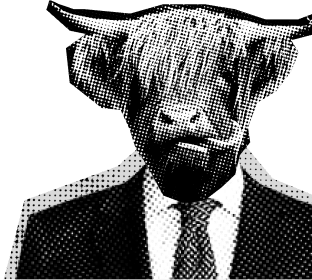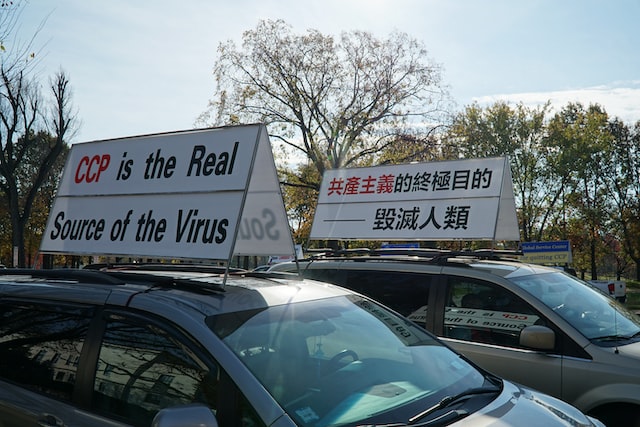Chinese authorities have tightened security following a rare outbreak of protests across the country over the weekend.
Young, healthy people rose up in an unprecedented move to attack the government’s zero Covid policy—which includes draconian lockdowns that span entire cities—and to call for the ousting of President Xi Jinping and other leaders of the Chinese Communist Party (CCP).
By Monday most of the protests had calmed, but not before authorities had made concessions, easing some of the lockdown rules, which was also unusual for the Chinese government.
Is this the start of something new in the People’s Republic of China?
Unprecedented Calls for Xi’s Ouster
Amid footage circulating on Chinese social media, protesters were heard shouting, “Communist party step down! Xi Jinping step down!”
Dr. Timothy R. Heath, Senior International/Defense Researcher at the RAND Corp., tells Political IQ that there’s been virtually no rhetoric like this in recent Chinese history.
“It’s hard to think of a precedent, actually. Hu Jintao, Jiang Zemin, even Deng Xiaoping didn’t see the sort of public denunciation and criticism of the actual Chair, so it is extremely unusual if it’s not unprecedented,” he says.
He does point out, though, that it’s significant that none of the CCP’s elites are openly criticizing Xi. “If there’s no evidence of a split in the leadership then it’s harder for any of these protests to gain traction,” he says. “Until that happens I don’t think these protests pose a threat to CCP rule.”
“It’s not surprising that [Xi] has people out on the streets. But these dictators, unfortunately, have pretty sophisticated means of remaining in power,” Sen. Chris Murphy (D-CT), a member of the Senate Foreign Relations Committee, noted on Sunday.
Chinese Protests Themselves Are Rare
While protests do occur in China, they rarely happen on such a massive scale, according to Maria Repnikova, an associate professor at Georgia State University who studies Chinese politics and media. “This is a different type of protest from the more localized protests we have seen recurring over the past two decades,” she said.
“This is probably the largest mass protest against the central government since Tiananmen Square, so that’s very unusual,” adds Heath.
And as for authorities modifying their policies, he notes, “Usually they will only back off of certain policies after violence, like when people are so angry that they start doing very destructive things.”
That hasn’t been the case this time. The protests have largely been peaceful.
Deadly Fire Was Instigating Factor in Chinese Protests
Much like the death of 22-year-old Mahsa Amini in police custody sparked protests across Iran, an instigating tragedy was also the spark that set off the protests in China.
A fire Thursday in an apartment building killed 10 people and injured nine in the northwestern Xinjiang region. Lockdowns there had left people stuck inside for more than three months.
Making matters worse, videos circulated on social media showing that fire trucks were blocked by pandemic control barriers and cars stranded by quarantined owners.
People in the Xinjiang city of Urumqi were soon seen in videos protesting, confronting authorities and breaking down a barrier while shouting, “End the Covid lockdown!”
City authorities apologized Friday, promising to investigate the fire’s origins. They also promised to phase out Covid restrictions, although they refused to say the restrictions obstructed the fire fight.
Three Years’ Buildup of Lockdown Frustration
By Saturday, protests had spread to other cities, including Shanghai, China’s most populous city, the capital Beijing, and the university town of Nanjing.
Protesters mocked China’s zero Covid policy, then broadened the rhetoric to include chants like, “Democracy, rule of law, freedom of expression!”
Videos showed protesters on the streets of the southwest city of Chengdu late Sunday. “We don’t want lifelong rulers!” they shouted, referring to Xi’s recent acquisition of an unprecedented third term.
“It’s important to remember that the protests are happening in urban areas among younger people who are healthy and vaccinated and really resent these restrictions,” says Heath. He notes that in the rural, remote areas of China, the zero Covid policy’s more accepted because movement there hasn’t been as restricted. “It is concentrated mainly in these urban areas. Educated people are hearing about what’s going on outside in the world, and they’re getting frustrated that they cannot live their lives the way they want to.”
Vaccination Roll-out a Likely Aggravator
Dr. Anthony Fauci, Chief Medical Adviser to President Biden, said on Sunday that “with all due respect,” China has not handled its Covid vaccination rollout very well.
“So if you look at the prevalence of vaccinations among the elderly, that it was almost counterproductive, the people you really needed to protect were not getting protected,” he stated.
Heath elaborates, explaining that the CCP vaccinated the young and healthy first “because they didn’t know about side effects, so they were reluctant to approve it for older folk.”
The result? The vaccination rate among the elderly is “pretty low” to this day, because they’re hesitant to the point of scared to get vaccinated, believing false rumors about its health effects. And that leads the young and healthy to feel like they’re being punished with unnecessary lockdowns because the elderly are refusing the vaccine.
Spilling Over into Factory Protests
The frustration with the zero Covid policy is also spilling into worker uprisings. On November 23 at Foxconn, China’s largest iPhone assembly factory, workers confronted police in riot gear. They were furious that the company hadn’t made good on a promised bonus and pay package.
“But definitely there was resentment over Covid-19 restrictions” playing into it, says Heath. “People were not getting reimbursed or paid when they were ordered to leave following Covid lockdown instructions.”
On Thursday, Foxconn released a statement, saying a “technical error occurred during the onboarding process,” and that it was doing its best “to actively solve the concerns and reasonable demands of employees.”
“That’s part of the problem with these lockdowns; enforcement is very erratic, it’s unpredictable, it’s ham-handed,” adds Heath. “People feel that officials are not consistent. They’re not making sure that people are not getting ripped off by employers.”
China’s Economy Is Suffering
The frustration also comes under an umbrella of youth unemployment at 20%, sagging corporate profits and woefully underperforming economic growth.
Helen Raleigh, author of “Backlash: How China’s Aggression Has Backfired” wrote in an op-ed that the zero Covid policy has led analysts to cut China’s GDP forecast for 2022 to 2.8%, much lower than Beijing’s official target of 5.5%. “Yet, Xi worsened China’s economic woes by cracking down on private businesses, which had been the engine of China’s three-decade economic growth.”
Will Chinese Protests of Today Differ from the Past?
In 2019, Hong Kong was rocked by pro-democracy protests. City streets became increasingly violent as police cracked down on demonstrators.
However, it wasn’t the police who ended the uprising—it was the Covid outbreak and its subsequent lockdowns. So it’s difficult to use Hong Kong as a barometer, should these covid protests become a trend.
The most infamous Chinese protest in recent decades was Beijing’s Tiananmen Square in 1989. On June 4, the CCP sent a column of tanks and armed troops into the square, instructing them to “use any means” to clear out the demonstrators. Thousands of soldiers fired into the crowd, killing and injuring hundreds, although the exact toll is unknown.
Heath says we’re not likely to see a repeat of Tiananmen Square or anything close to it. “The Chinese government learned from that experience, I would say.” He adds that in 1989, “They just didn’t have modern riot control equipment like tear gas and riot gear and non-lethal means of crowd control. They have all that stuff now.”
More than that, he notes, “I don’t think the government is quite as eager to shed a lot of blood as they were in 1989. I mean, it’s really striking that they are so reluctant to force old people to get vaccines. That they’d rather tolerate all this unrest and massive hits to the economy tells you that the government is just more sensitive to potential discontent over the loss of life to government policies.”


